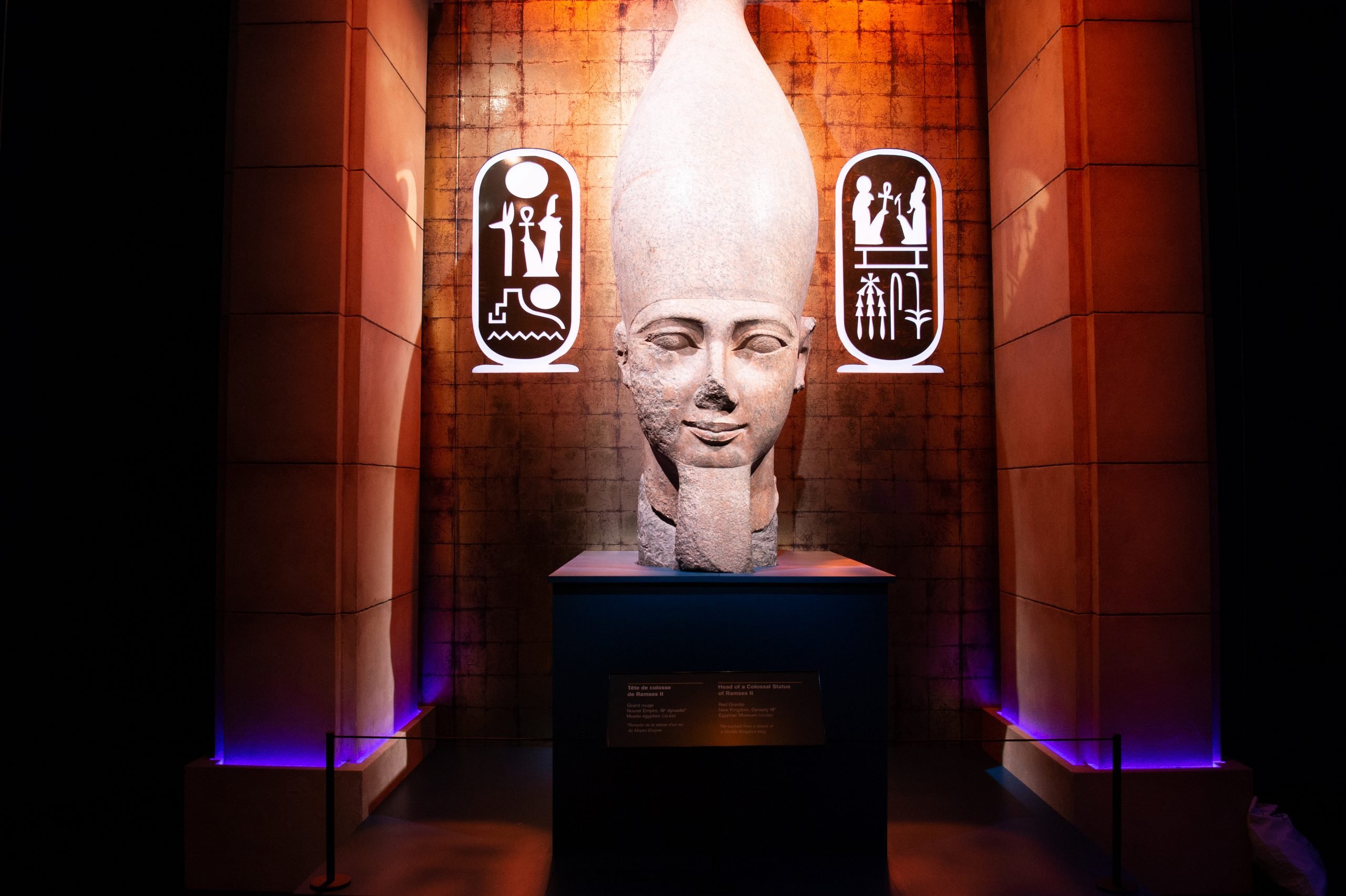
From whichever angle you approach Ramses II, the 13th century B.C.E pharaoh earns his epithet: the Great.
His 67-year reign stands as the second longest in Egyptian history. Bold in both war and peace, Ramses expanded Egyptian territory and signed the earliest-known peace treaty with the Hittites in 1271 B.C.E. This consolidation led to an unparalleled building of cities and monuments—often to himself. Ramses’s progeny was also vast, he’s estimated to have fathered more than 100 children.
There may have been 11 other pharaohs named Ramses, but “Ramses and the Gold of the Pharaohs,” a recently opened show in Paris demonstrates the pharaoh who acquired semi-godlike status in his own lifetime needs no identifiers.
The exhibition is on the third leg of a five-year, 10-city global tour with previous stops at Houston Museum of Natural Science and San Francisco’s de Young Museum. It was devised through a collaboration between the Supreme Council of Antiquities of the Arab Republic of Egypt and World Heritage Exhibitions.
Installation view of Sennedjem’s outer coffin, and its lid. Photo: la Grande Halle de la Villette à Paris, © Yvan Lebert.
Across more than 180 objects, many of which have never before left Egypt, the show creates a vivid picture of the country’s ancient Golden Age. Though Ramses’s tomb in the Valley of the Kings was raided and plundered of its gold adornments, the show presents ample treasures directly connected to him including a colossal red granite statue of the pharaoh’s head, one of his many gold rings, and painted reliefs celebrating his military victories.
More broadly, the exhibition presents a view of the world Ramses inhabited, sculpted, and inspired. There is space dedicated to the grave of royal tomb builder Sennedjem, a collection of mummified animals found at the Saqqara necropolis, and treasures discovered in the royal tombs in Dahshur and Tanis.
Installation of the multimedia display of the Battle of Kadesh. Photo: la Grande Halle de la Villette à Paris, © Yvan Lebert.
The exhibition also leans on contemporary technology to bring both artifacts and historical events to life. Drone footage and computer animations have been used to recreate the ancient splendor of Ramses’s memorial temple, photo-murals are projected on walls, and there’s a multimedia recreation of the Battle of Kadesh, a 1274 B.C.E. chariot battle widely considered the pharaoh’s greatest military achievement. There is also a V.R. experience available to visitors.
“Ramses II is considered to be the greatest king ever to rule Egypt,” said Mostafa Waziri, Egypt’s Secretary-General of the Supreme Council of Antiquities in a press statement. “This exhibition will illuminate the pivotal moments that earned the great pharaoh his place in history, while bringing visitors face-to-face with absolutely stunning Egyptian artifacts”
See more images of the exhibition below.
Head of a colossal statue of Ramses II. Photo: Sandro Vannini/Laboratoriorosso World Heritage Exhibitions.
Statue of Ramses kneeling. Photo: Sandro Vannini/Laboratoriorosso World Heritage Exhibitions.
Granite bust of Merenptah. Photo: 2020 World Heritage Exhibitions.
Necklace with falcon heads and counterweights of Princess Neferou-Ptah Photo: Sandro Vannini/Laboratoriorosso World Heritage Exhibitions.
Coffin of Ramses II made in cedar at the end of the 18th dynasty. Photo: Sandro Vannini, Laboratoriorosso/World Heritage Exhibitions.
Bracelet of Chechonq II. Photo: Sandro Vannini/Laboratoriorosso World Heritage Exhibitions.
Installation view of the upper part of an obelisk with the name of Ramses II. Photo: Sandro Vannini/Laboratoriorosso World Heritage Exhibitions.
Mirror of Sithathoriounet. Photo: Sandro Vannini/Laboratoriorosso
World Heritage Exhibitions.
“Ramses and the Gold of the Pharaohs” is on view at the Grande Halle de la Villette, 211 Av. Jean Jaurès, Paris, France, through September 6.